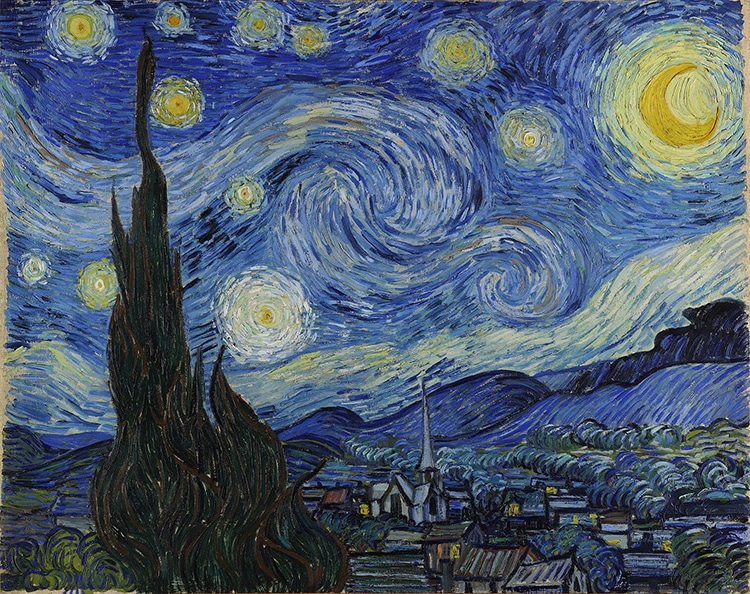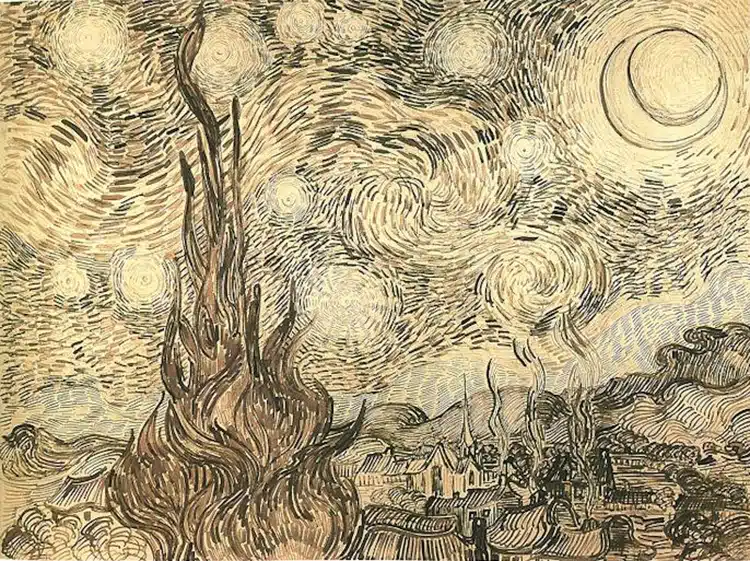
The legendary painting. (Photo: Wikimedia Commons, Public domain)
Vincent van Gogh is arguably modern history’s most well-known artist. From cutting off his ear to painting with swirling visible brushstrokes, Van Gogh was surprising in many ways. His artistic forays evolved over time as he produced well over 1,500 works. His most famous work is The Starry Night, which features a twirling night sky in vivid brushstrokes above cypress trees. This night sky has long fascinated art lovers, but it has recently impressed atmospheric scientists too. In a new paper, researchers announced that the painting’s sky surprisingly reflects a deep understanding of atmospheric physics.
The team of scientists studied the painting by comparing the 14 largest sky “movements” with scientific models for “cascading” energy through the atmosphere. “The scale of the paint strokes played a crucial role,” paper author Yongxiang Huang said in a statement. “With a high-resolution digital picture, we were able to measure precisely the typical size of the brushstrokes and compare these to the scales expected from turbulence theories.”
The pattern of spirals mimics Kolmogorov’s law, which describes the fluid dynamics of how turbulence dissipates. By comparing the colors and lightness of the brushstrokes, they also confirmed that they reflect Batchelor’s scaling. This is another measurement of dissipation.
So how did Van Gogh manage to paint atmospheric physics? “It reveals a deep and intuitive understanding of natural phenomena,” Huang noted. “Van Gogh’s precise representation of turbulence might be from studying the movement of clouds and the atmosphere or an innate sense of how to capture the dynamism of the sky.”
The artist was deeply attuned to the movements of nature, as seen in his many paintings and sketches of bending trees and flowing fields. While the turbulence captured by his brush mirrored the emotional turbulence that appeared throughout his life, it adds to the beauty of his work and its scientific value.
Atmospheric scientists discovered that the sky movement in Van Gogh’s brushwork mimics modern scientific theories of turbulence.

The Starry Night, and 1898 sketch. (Photo: Wikimedia Commons, Public domain)
h/t: [Popular Mechanics]
Related Articles:
After Being Postponed for 120 Years, Monet’s ‘Thames’ Paintings Will Finally Exhibit in London
https://mymodernmet.com/claude-monet-1915/
Rare Footage From 1915 Captures Claude Monet Painting at His Gardens in Giverny
Who Was Auguste Rodin? Get To Know the Famous Sculptor of ‘The Thinker’
